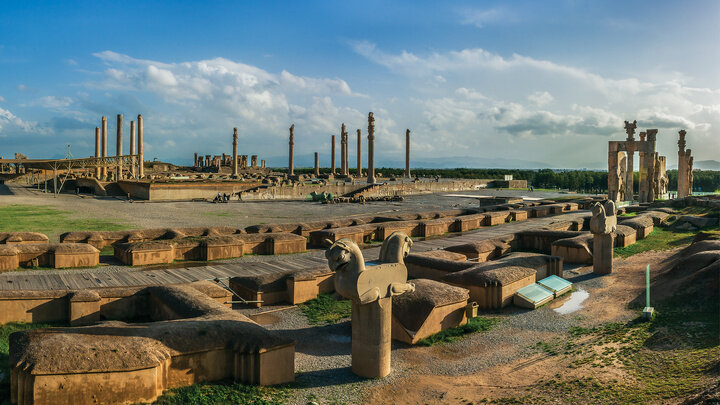UNESCO-listed Persepolis to showcase ancient waterways, for Nowruz
Unraveling the preparations in light of the upcoming spring holidays, Fars province’s tourism chief announced the reopening of the historic 2-year-500-year-old subterranean waterway of Iran’s Persepolis to holidaymakers.

Mohammad Sabet-Eghlidi revealed preparations for Nowruz festivities, particularly at the renowned UNESCO World Heritage Site of Persepolis, mentioning the various initiatives aimed at revitalizing the ancient site, including tree pruning, road resurfacing leading to Persepolis, replacement of wooden staircases and museum enhancements, to name a few.
Sabet-Eghlidi further detailed the measures, stating that during the approaching Nowruz, one of the historic 2,500-year-old subterranean waterways of Persepolis which is the major route will be reopened to visitors with an eye toward adding a new dimension to the site's allure.
“These subterranean waterways are considered as the iconic and unique features of the Persepolis complex,” the official noted.
“Their reopening is anticipated to introduce a fresh attraction and enrich the visitor experience.”
Regarding the other restoration projects within the province, the official pointed to the refurbishment of Saadi tomb, Arg of Karim Khan, and collaboration with the Shiraz Municipality to rejuvenate Shiraz's Naqareh Khane Square.
Eghlidi also announced plans for the renovation of Firuzabad's Qal’eh Dokhtar and Tange Chogan, revealing the reopening of the Firuzabad cable car after a decade-long hiatus, providing visitors with access to breathtaking views of the region.
Highlighting underway restoration efforts, the official stressed the importance of preserving cultural heritage, urging philanthropic support to complement limited heritage resources.
He also emphasized that ongoing projects testify to the province's commitment to safeguarding its rich historical legacy.
Persepolis, the ancient ceremonial capital of the Achaemenid Empire, boasted not only grand architectural structures but also intricate water management systems, including waterways and channels. These waterways played a crucial role in sustaining the city and facilitating practical functions.
The waterways at Persepolis served multiple purposes, including supplying water for drinking, irrigation for agricultural activities in surrounding areas, and providing for the needs of the city's inhabitants.
They were engineered to efficiently capture and distribute water from nearby sources to different parts of the city.
These water management systems reflect the advanced engineering and hydraulic expertise of the ancient Persian civilization.
While specific details about the layout and function of the waterways at Persepolis may vary, their existence underscores the sophisticated urban planning and infrastructure development that characterized this ancient capital.
Today, the remnants of these water management systems offer valuable insights into the ingenuity of the Achaemenid Empire.
